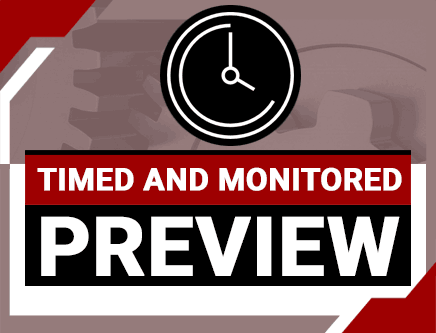Engineering Ethics: Case Study of the TV Antenna Tower Collapse (Ohio Timed & Monitored)
Credit: 1 PDH
Subject Matter Expert: Edward P. Brunet, Jr., P.E.
In Engineering Ethics: Case Study of the TV Antenna Tower Collapse , you'll learn ...
- Details about the construction and installation of the tower and the miscalculations that led to the accident
- The difference between an engineer's social or ethical responsibility and his/her legal liability
- The decisions that were made by both parties involved in this case study and alternative choices available to engineers in situations like this one
- Important product liability and negligence issues for engineers
Overview

To meet the Ohio Board's intent that online courses be "paced" by the provider, a timer will be used to record your study time. You will be unable to access the quiz until the required study time of 50 minutes has been met.
Credit: 1 PDH
Length: 22 pages
This course is based on a case study of an actual event where five people perished in a horrible engineering accident that was caught on film in 1982. It was a needless tragedy that highlights some of the ethical dilemmas faced by today's professional engineers.
On December 7, 1982, a television station video crew was filming the raising of their new 1800-foot television tower. As the last section of the tower was being raised, the supporting bolts failed, which caused the section to fall, sheering guy wires and bringing down the entire tower structure. Several riggers fell 1000 feet to their death. Since the TV station's video camera caught this catastrophe on film, the film has allowed engineers and scientists to closely examine the event.
The case of the TV antenna tower collapse raises serious ethical questions about the behind-the-scenes engineering decisions that were made by the parties involved. How did these decisions lead to the accident? And how, by exercising better ethical judgment, could these deaths have been prevented?
Another important issue raised by this case involves social responsibility versus legal liability and negligence. Does being legally right mean that you are ethically right? And how can we as engineers make ethically correct decisions? Readers are urged to review the facts, examine the ethical decisions that were made, and consider their own possible reactions had they been involved in this event.
Specific Knowledge or Skill Obtained
This course teaches the following specific knowledge and skills:
- The ethical and legal considerations of the case
- How to determine the actual stress calculation for the U-bolt connection as compared to the erroneous calculations used
- Possible choices for this situation that would have been more ethically appropriate
- The positions of both parties and the thought processes behind the decisions made
- Factual details of the accident site and damage caused to the tower and antenna
Certificate of Completion
You will be able to immediately print a certificate of completion after passing a multiple-choice quiz consisting of 10 questions. PDH credits are not awarded until the course is completed and quiz is passed.
| This course is applicable to professional engineers in: | ||
| Alabama (P.E.) | Alaska (P.E.) | Arkansas (P.E.) |
| Delaware (P.E.) | District of Columbia (P.E.) | Florida (P.E. Area of Practice) |
| Georgia (P.E.) | Idaho (P.E.) | Illinois (P.E.) |
| Illinois (S.E.) | Indiana (P.E.) | Iowa (P.E.) |
| Kansas (P.E.) | Kentucky (P.E.) | Louisiana (P.E.) |
| Maine (P.E.) | Maryland (P.E.) | Michigan (P.E.) |
| Minnesota (P.E.) | Mississippi (P.E.) | Missouri (P.E.) |
| Montana (P.E.) | Nebraska (P.E.) | Nevada (P.E.) |
| New Hampshire (P.E.) | New Jersey (P.E.) | New Mexico (P.E.) |
| New York (P.E.) | North Carolina (P.E.) | North Dakota (P.E.) |
| Ohio (P.E. Timed & Monitored) | Oklahoma (P.E.) | Oregon (P.E.) |
| Pennsylvania (P.E.) | South Carolina (P.E.) | South Dakota (P.E.) |
| Tennessee (P.E.) | Texas (P.E.) | Utah (P.E.) |
| Vermont (P.E.) | Virginia (P.E.) | West Virginia (P.E.) |
| Wisconsin (P.E.) | Wyoming (P.E.) | |




